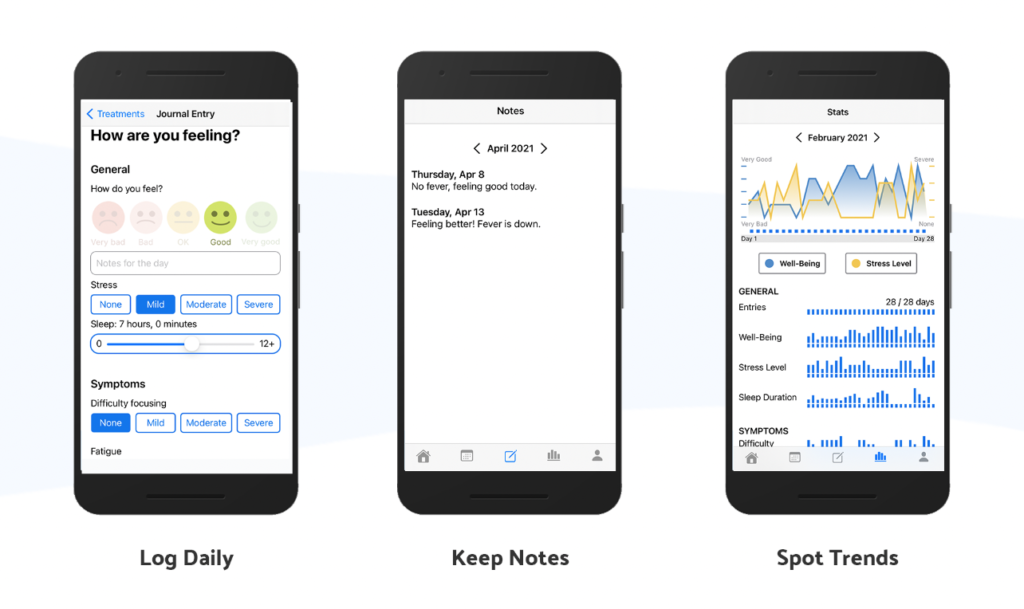While many Americans can see the end of the pandemic in sight, for those who contracted COVID-19 and have developed chronic health conditions as a result, the pandemic’s effects will linger for a while.
As scientists continue to learn about these patients — long haulers, as they’re often called — Tracey Welson-Rossman of Chariot Solutions and TechGirlz has launched a tech tool to track and learn from these ongoing symptoms.
Journal My Health, an app for long haulers and others with chronic health conditions, just launched to iOS users last week. The startup’s product tracks a person’s symptoms in journal form, integrates data from other health apps and helps report patterns to a patient’s healthcare team.
The idea came to Welson-Rossman last summer. Before the pandemic, she faced her own set of chronic health issues, but as even healthy, young people began developing severe symptoms after recovering from COVID-19, “we realized its a crisis, and it’s only going to get worse,” she told Technical.ly. About 10% of people experience some form of long-hauler COVID-19 who are effected, an early study found.
The app is designed to be used like a diary or log of a person’s symptoms, tracking things like pain, shortness of breath or even how someone’s generally feeling on a given day. It integrates with other biometric devices, like a Fitbit, and provides a more complete picture of a person’s health. Even outside environmental factors, like temperature, humidity and barometric pressure tracked.
When it’s time to visit the doctor, a patient can download or print out their log of symptoms. The goal is to be able to have a data-driven conversation with their health provider with extra details often forgotten or untracked in a normal visit.
“It makes some patients feel more credible when they visit their doctor because they’re coming with the data,” Welson-Rossman said. “Doctors tell us ‘we have 20, maybe 30 minutes with patients,’ and having that conversation with them while being able to look at that info quickly with a notes section leads to more productive care.”

